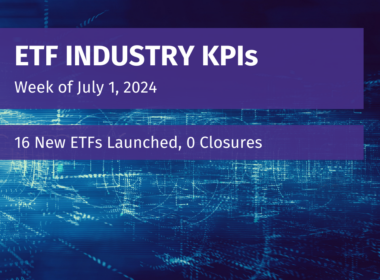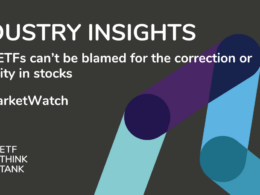This content is shared by MacMillan Sullivan Communications
Over the past decade, it has been fairly easy for investors to make money in the market. From 2009 to 2021, the S&P 500 notched nine double-digit positive annual returns. During the same time span, the Bloomberg Barclays Aggregate Index was positive for 11 of those years as well. Investors could set a simple portfolio allocation and happily take what the market gave them, without having to give much thought to diversification or risk tolerance.
There is no doubt that this period of low volatility made some investors complacent. In this regard, 2022 should be an opportunity for some to reevaluate their portfolio positioning and shift as necessary to weather the storm.
But finding shelter has been difficult.
Inflation, tightening monetary policy, and geopolitical risk have combined to create a challenging environment for nearly all asset classes. The S&P 500 has zigzagged down over the last several months, falling by over 15% so far this year. Meanwhile, the Agg had its worst quarterly return since 1980 and is now down some 10% for the year. International equities, REITs, and high yield are all sharply negative as well, leaving nowhere to hide among most traditional asset classes.
Investors Betting on Beta
In ETF.com’s review of ETF flows for the month of April, Dan Mika noted that investors are betting big on triple leveraged bullish bets on semiconductors and tech names. In fact, assets in leveraged ETFs have increased by nearly 19% this year, with $11 billion flowing into these funds. Inverse ETFs have also been popular, with nearly $3 billion in net flows year-to-date, a 17% increase.
This suggests that investors are eager to make directional bets on the market itself.
But a lack of interest in alternatives, where flows fall far behind both leveraged and inverse ETFs on an absolute level as well as in percentage terms is surprising given the category’s promise of delivering uncorrelated returns and some much needed diversification within a portfolio.
Currently, $7.5 billion are held within alternatives ETFs and the category has seen just over $400 million in net flows for the year.
Not Easy to Define
One possible reason that investors are hesitant to add these types of ETFs into their portfolio is that they are not always easy to define. In some ways, the category label “alternatives” is a bit of a catch-all term, meaning it includes strategies that don’t neatly fit elsewhere. Alternatives funds can be very different from one another.
While two domestic equity ETFs might have different methodologies and invest in different parts of the stock market, one can be quite confident that they will both hold stocks. But two alternative ETFs could have entirely different holdings, ranging from stocks to Treasuries to other ETFs to futures and more.
Divergent holdings also mean divergent performance expectations. The same market environment can create very different outcomes for the funds within this category. Demonstrating this point, trailing three-month returns for alternatives ETFs range from a gain of 49.5% to a loss of -22.7%.
Here more than in any other category, investors need to do their homework to understand what is inside the ETF and what will drive performance of the holdings. But the complexity of these types of strategies can create a hurdle for advisors and retail investors alike, underscoring the need for education so investors can understand how and why these types of strategies can be beneficial.
With an average expense ratio of 1.01% for the category, this can also help cost-conscious ETF investors stomach a price tag that is likely significantly higher than the rest of the holdings within their portfolio.
Clear Communication Is Needed
After years of working with advisors, and more recently covering ETFs and helping to craft communications around funds like these, I believe that issuers and others in the industry can help by removing as many of these hurdles as possible. Outline the benefits of adding alternative ETFs to portfolios in a direct and comprehensible way, creating reasonable performance expectations for the fund, and defining clear use cases for such products.
Some of these ETFs might make the most sense within a dedicated allocation to alternatives. Others might work better as part of an equity or fixed income allocation, complementing more traditional exposures. While investment selection and asset allocation are never one-size-fits-all solutions, helping the investor to understand and to envision the way this fund could fit within the rest of their portfolio could be a way to increase adoption of alternative ETFs.
Time will tell how long this stormy market environment will last, but there is no doubt that it provides an opportunity for investors to rethink their allocations and for issuers to consider how to bridge the guidance gap when it comes to alternative investments.
Disclosure
All investments involve risk, including possible loss of principal.
This material is provided for informational purposes only and should not be considered an individualized recommendation or personalized investment advice. The investment strategies mentioned may not be suitable for everyone. Each investor needs to review an investment strategy for his or her own particular situation before making any investment decision.
All expressions of opinion are subject to change without notice in reaction to shifting market conditions. Data contained herein from third party providers is obtained from what are considered reliable sources. However, its accuracy, completeness or reliability cannot be guaranteed.
Examples provided are for illustrative purposes only and not intended to be reflective of results you can expect to achieve.
The value of investments and the income from them can go down as well as up and investors may not get back the amounts originally invested, and can be affected by changes in interest rates, in exchange rates, general market conditions, political, social and economic developments and other variable factors. Investment involves risks including but not limited to, possible delays in payments and loss of income or capital. Neither Toroso nor any of its affiliates guarantees any rate of return or the return of capital invested. This commentary material is available for informational purposes only and nothing herein constitutes an offer to sell or a solicitation of an offer to buy any security and nothing herein should be construed as such. All investment strategies and investments involve risk of loss, including the possible loss of all amounts invested, and nothing herein should be construed as a guarantee of any specific outcome or profit. While we have gathered the information presented herein from sources that we believe to be reliable, we cannot guarantee the accuracy or completeness of the information presented and the information presented should not be relied upon as such. Any opinions expressed herein are our opinions and are current only as of the date of distribution, and are subject to change without notice. We disclaim any obligation to provide revised opinions in the event of changed circumstances.
The information in this material is confidential and proprietary and may not be used other than by the intended user. Neither Toroso or its affiliates or any of their officers or employees of Toroso accepts any liability whatsoever for any loss arising from any use of this material or its contents. This material may not be reproduced, distributed or published without prior written permission from Toroso. Distribution of this material may be restricted in certain jurisdictions. Any persons coming into possession of this material should seek advice for details of and observe such restrictions (if any).












